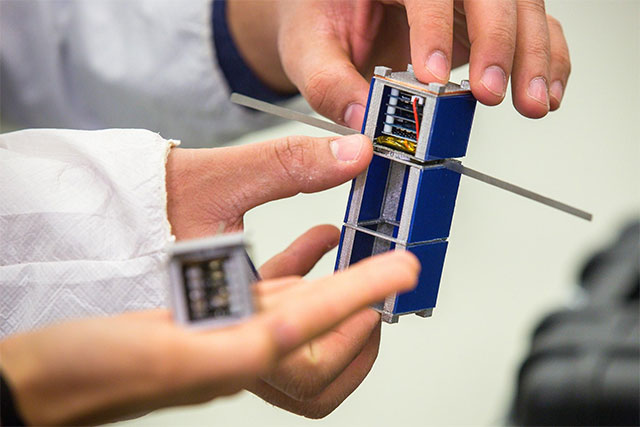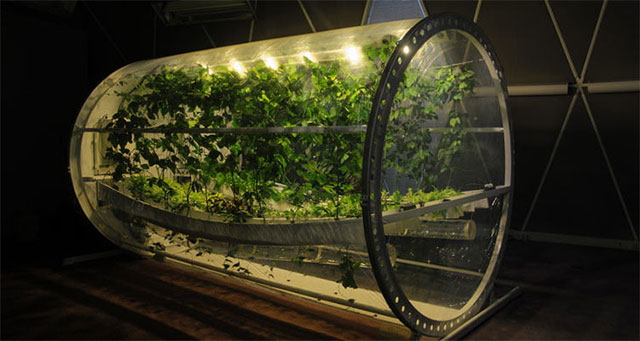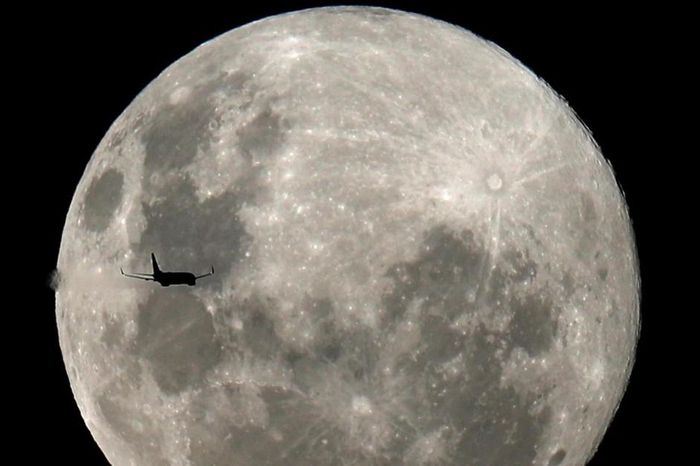New technology helps NASA find water, self-sufficient food on the moon
With the mission of 'landing' manpower and building research stations on the moon scheduled to begin in 2024, NASA is pushing hard to prepare the necessary technologies both in vehicles, people and logistics. for this ambitious goal.
Recently, the US Space and Space Administration decided to 'pump money' to fund two research projects at the University of Arizona, related to how people can produce and access necessities. needed as food and water right on the lunar environment to cater to long-term research projects without the need for constant supplies from the earth.
Use small satellites to detect water on the moon
Access to water on the moon will be extremely beneficial, both for drinking as well as creating rocket fuel. Scientists believe that there may be ice in craters in the Antarctic region of the moon, but locating these water sources is a major challenge.
The proposed idea is to use small, disposable satellites, called FemtoSats, to search for water on the moon. These satellites possess a size that can be placed in the palm of their hand, and are equipped with a powerful laser system. They can travel quickly to different locations on the moon to hunt for water and communicate with the lander via laser.
 New technology helps NASA find water, self-sufficient food on the moon Picture 1
New technology helps NASA find water, self-sufficient food on the moon Picture 1
The low-cost, mobile FemtoSats satellite is the perfect way to explore strange and dangerous areas on the moon.
Growing greens in a zero-gravity environment
Fresh food is important not only for the astronauts' physical health but also for their mental health. However, working outside the earth, access to fresh food is almost impossible. To solve this problem, scientists are developing a modern closed farming system, which can provide water and nutrients for plants to grow in low / zero gravity environments, because Keeping the water balance, nutrients in the roots and maintaining the amount of oxygen needed by the plants are key.
 New technology helps NASA find water, self-sufficient food on the moon Picture 2
New technology helps NASA find water, self-sufficient food on the moon Picture 2
The system is designed based on the modern agricultural solutions that have been introduced as Vegetable Production System (VEGGIE) - each 'garden' will be the size of a suitcase, containing about 6 vegetables, each The plants will be planted and rooted on a special clay and fertilizer mixture so that they can grow normally.
It is still too early to talk about the success of these 2 projects. But it shows NASA's great ambition and determination in its mission to conquer the moon.
You should read it
- Why didn't NASA intend to return to the Moon?
- This is why we always see the Moon always following us
- Full Moon facts - Full moon you may not know yet
- Discover incredible facts about the Moon
- Synthesize high resolution moon wallpaper on computer
- We may be able to see the 'second moon' in the sky with the naked eye next May
- Unexpected discoveries of the full moon
- NASA: 'Saturn's Titan moon will be our next stop'
- Why is the moon glowing?
- The biggest super moon in 70 years will appear on November 14
- 5 foods that should be combined with moon cakes will be good for health
- What's interesting is what happens if the Moon is 400km from Earth?
May be interested

This machine needs more turns to complete a cycle than the number of atoms in the universe

What is a negative pressure room, different from a normal room?

NASA reveals its latest snapshot of the Martian surface with a resolution of 1.8 billion pixels

What are the requirements for becoming an NASA astronaut?

Why is hail?

Animals can be surprisingly humanoid: rats can drive, dolphins dream ...





 Why didn't NASA intend to return to the Moon?
Why didn't NASA intend to return to the Moon? NASA: 'Saturn's Titan moon will be our next stop'
NASA: 'Saturn's Titan moon will be our next stop' NASA shares a rare photograph of a 'rainbow' surrounding the Moon
NASA shares a rare photograph of a 'rainbow' surrounding the Moon NASA will establish a standard time for the Moon
NASA will establish a standard time for the Moon 'Hot' race to design a self-propelled vehicle on the Moon for NASA
'Hot' race to design a self-propelled vehicle on the Moon for NASA NASA postpones plan to return humans to the Moon by 2024
NASA postpones plan to return humans to the Moon by 2024